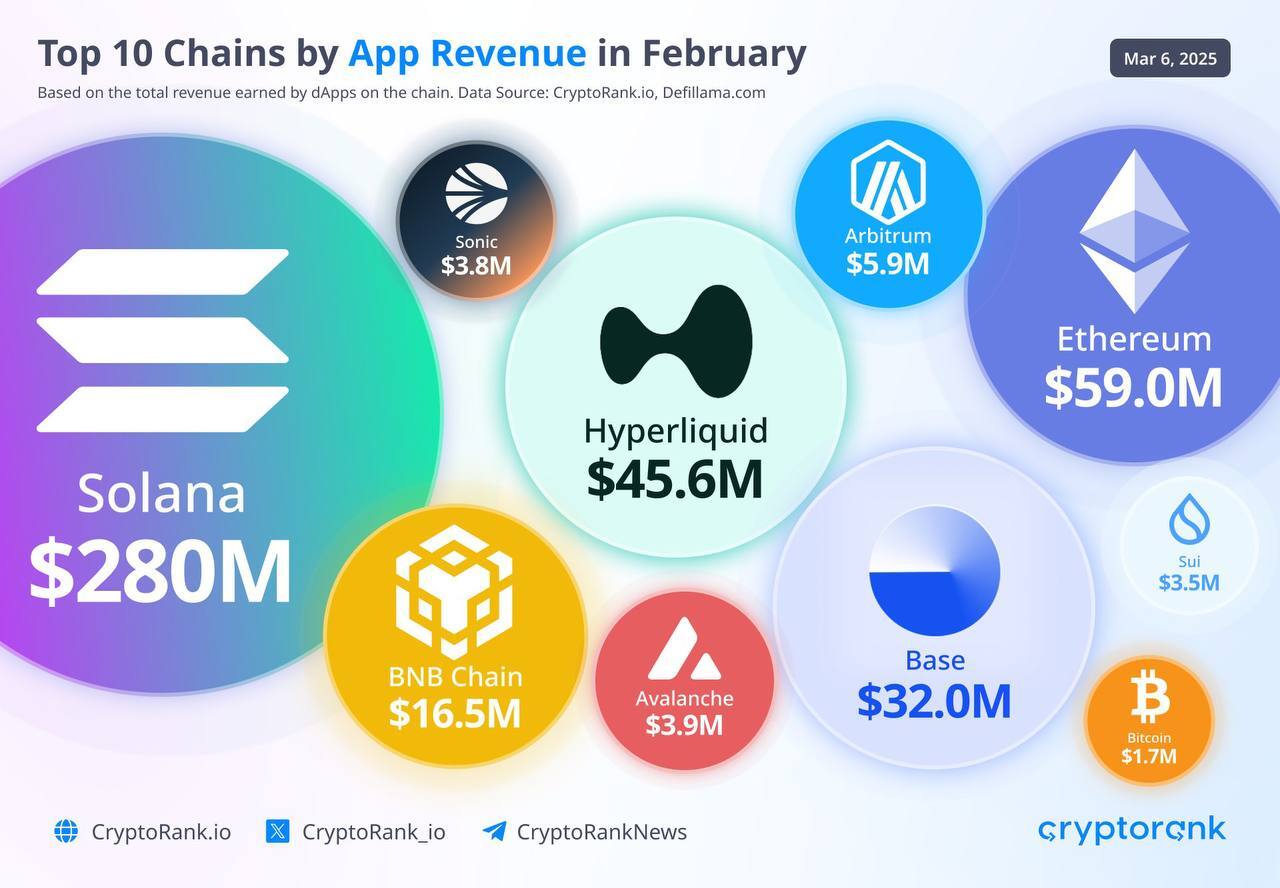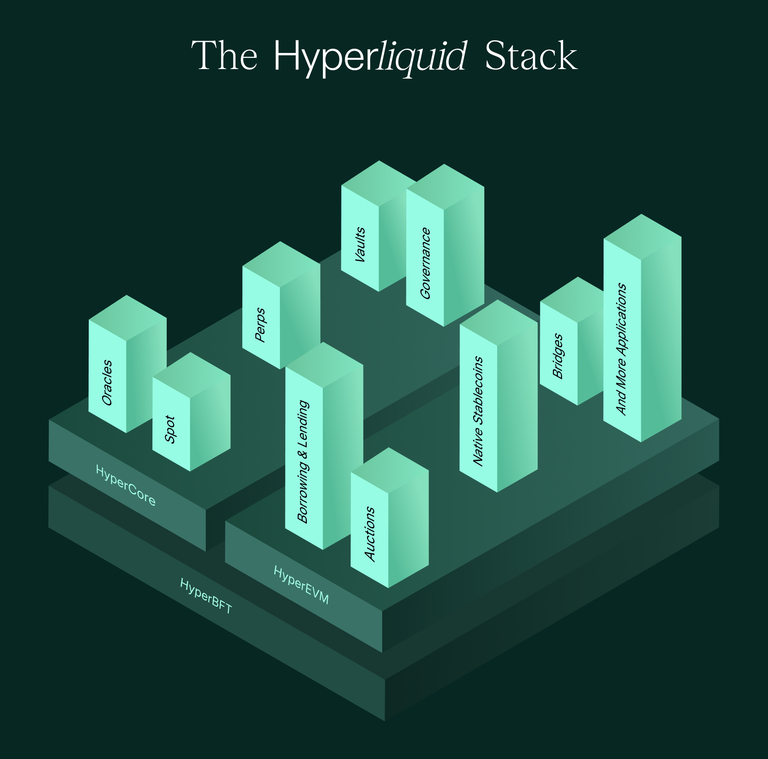n this blog series we tackle the investment and technology thesis for one our partners at Lavender.Five Nodes so that you don't have to. It is a overview that will assume industry knowledge from the reader so we can move through material quickly. However, we provide extensive guidance along the way. Grab a cup of Coffee, set the timer to 5 minutes and learn about the protocol that's reinventing on-chain derivatives trading - Hyperliquid.
The overview
Hyperliquid started a high-performance derivatives exchange built on its own purpose-built Layer-1 blockchain. Founded by ex-Hudson River Trading quant Jeff Yan @chameleon_jeff and a team of engineers from other institutions in the field of high-frequency trading. Following FTX's collapse, they set out to create a self-custodial trading platform that doesn't compromise on performance. The result is the most "hyped" on chain trading product ever. Hyperliquid offers a fully on-chain Central Limit Order Book (CLOB) perpetual DEX with CEX-like speed and depth. Today Hyperliquid captures a staggering 64% of on-chain perpetual trading volume, processing over $9 billion in 24-hour trading volume. With limited venture capital backing the team chose to reward original users with one of crypto's most significant airdrops. People are excited and for good reason as Hyperliquid has a rapidly expanding ecosystem that now also includes spot trading, HyperEVM smart contracts, and a growing collection of DeFi applications. Hyperliquid represents the fusion of institutional-grade trading technology with DeFi's transparency and self-custody, proving that decentralized exchanges can compete with - and potentially even outperform - their centralized counterparts.
The assumptions
- Traders want CEX-like performance without giving up custody of their assets or KYC
- Traders want quick access to newly launched (long-tail) assets
- On-chain derivatives trading requires purpose-built infrastructure to be competitive
- Traditional blockchains are too slow for high-frequency trading and real-time markets
- Post-FTX, the market will gradually favor self-custodial solutions with proper transparency
- A fully on-chain order book is superior to AMM-based or partially off-chain solutions
- The fragmented liquidity across DEXs hampers their ability to challenge CEXs
- Trader-first product design will win over excessive focus on tokenomics or VC funding
- Gasless transactions and low friction are crucial for mainstream DeFi adoption
- Community ownership aligns incentives better than traditional VC-backed models
- Some centralisation (whether in hardware/validators or execution) is good to bring a mature product to life
The execution
Instead of securing venture capital, the Hyperliquid team bootstrapped development and costs themselves. In a similar way they also bootstrapped the group of traders, growing slowly and later expanding quickly by using points and incentive campaigns. However, even after the previous points program has ran out, Hyperliquid volume has seen steady growth, proving that a first-in-class UX can sustain organic inflows and usage. The quality of execution is evident in their market dominance - capturing over 64% of on-chain perpetual volume while competitors like dYdX and GMX fight for the remaining share. Hyperliquid's strategic airdrop rewarded genuine users rather than speculators, with 31% of the token supply distributed to early adopters. Their community-centric approach has directly influenced product development, with over 50% of feature updates coming from user requests. The team consistently prioritizes performance and reliability, maintaining 99.9% uptime and sub-second execution speeds - critical factors that have allowed them to retain users beyond the initial airdrop hype.

1. HyperBFT blockchain
Hyperliquid's custom Layer-1 blockchain is the foundation of its fast-paced trading engine and snappy UX. Initially built on Tendermint, they upgraded to HyperBFT based on the HotStuff protocol to support growing trading volumes. This purpose-built infrastructure delivers sub-second finality and can process up to 200,000 orders per second - critical capabilities for high-frequency trading. Unlike general-purpose blockchains that must share block space with many applications, Hyperliquid's L1 is optimized specifically for financial primitives. Even with the addition of HyperEVM (the general purpose Smart contract layer on top of hyperliquid), this performance split remains. The Core (Rust VM) and EVM sections are separated layers on top of consensus removing some flexibility in shared state but keeping the performance it is known for. Hyperliquid has active bridges to mainly Arbitrum and recently Bitcoin, eliminating complex onboarding steps, and features a built-in oracle system for accurate price feeds. HyperBFT's continuous transaction sequencing allows the network to process orders without waiting for the completion of the current block's execution, dramatically reducing latency compared to traditional blockchains.

2. Fully on-chain CLOB
At the heart of Hyperliquid's success is its fully on-chain Central Limit Order Book. Unlike AMM-based DEXs that suffer from high slippage for large orders, or platforms that rely on partially off-chain solutions, Hyperliquid's CLOB matches orders directly at user-specified prices with complete transparency. Every trade is recorded on-chain, eliminating concerns about hidden frontrunning or opaque execution practices. The platform supports advanced trading features typically found only on centralized exchanges: perpetual futures with up to 50x leverage, cross-margin trading, and sophisticated order types including market, limit, stop-loss, and scale orders. By bringing institutional-grade trading infrastructure on-chain, Hyperliquid bridges the experience gap that previously kept professional traders tied to centralized platforms. Users do not just trade against each other though, many market makers have joined on-chain thereby providing very deep books for anyone to execute against, all without ever needing to KYC or wait for a deposit to finalize.
Moreover, Hyperliquid is generally the first trading venue to feature leverage trading of newly launched tokens, outpacing CEX and other competitors, essentially becoming the go-to place to trade long-tail assets.
There is still room for growth on mobile, where currently little apps exist that allow interacting with Hyperliquid Perps with no app built by the Hyperliquid team themselves. So far, Okto Wallet established itself the first-mover with several other interfaces being developed by other teams such as Mecury, Swypt and Dexari.
3. Hyperliquid Protocol (HLP) vault
Besides direct orders and active market makers Hyperliquid's liquidity also comes from a solution called the HLP vault, especially in the early days this was core to a good trading experience and pulling a 2nd type of user onto Hyperliquid. Users can deposit funds (primarily USDC) into the HLP vault to act as counterparties to traders. This passive income option follows the "house always wins" model, with depositors benefiting from trading activity through a share of fees, funding payments, and liquidation proceeds. Unlike static liquidity pools on AMM-based DEXs, HLP employs dynamic market-making strategies that adjust based on market conditions, resulting in deeper liquidity and more efficient price discovery. The system has attracted over $540 million in deposits, providing the foundation for Hyperliquid's impressive trading volumes. Returns for HLP participants have been substantial, with annualized yields reaching 54% during peak trading periods, creating a self-reinforcing cycle where liquidity attracts traders, generating fees that attract more liquidity. Basically GMX GLP on-steroids by simply being more dynamic and performant.
4. Ecosystem expansion
What started as a perpetual DEX has rapidly evolved into a comprehensive trading ecosystem. In mid-2024, Hyperliquid launched its spot exchange featuring HIP-1 standard tokens, including HYPE and various memecoins. The addition of spot BTC trading through Unit's integration in early 2025 marked a significant expansion, with more assets including ETH, SOL, and even real-world assets planned.
February 2025 saw the launch of HyperEVM on mainnet, introducing general-purpose programmability to Hyperliquid's high-performance infrastructure. This creates a unified architecture where Hyperliquid = HyperCore + HyperEVM. HyperCore consists of the performant native components (order book, perp and spot DEX, staking, oracles) while HyperEVM provides the general-purpose computing environment. What makes this combination uniquely powerful is that they share one global, composable state - there is some need of bridging between the two stated
This architecture enables developers to build EVM-compatible financial applications that inherit the same speed and efficiency as the core exchange. Smart contracts deployed on HyperEVM can directly read price data from HyperCore orderbooks via "read precompiles" and even execute trades through "write precompiles" - all with just a few lines of code. Several projects like Hyperdrive (DeFi Hub), Theo (Liquidity Aggregator), and HypurrFi (Lending) are already building on Hyperliquid, creating a composable ecosystem that leverages the platform's unique strengths.
5. Community-first token distribution
Hyperliquid's approach to token distribution stands in stark contrast to typical VC-backed projects. With no private investor allocations, the team ensured that tokens weren't diluted by large VC stakes - a significant departure from competitors like dYdX (50%+ to investors) or GMX (30% to insiders). The November 2024 HYPE token launch featured one of crypto's largest airdrops, distributing 310 million tokens (31% of supply) worth $1.2 billion at launch to over 90,000 genuine users. Many people got 6 figure airdrops which got even bigger as HYPE surged from $3 to around $25 in weeks. Ever since then the Assistance Fund, which accumulates a portion of trading fees to buy HYPE from the market has been growing like crazy. Along side a fee burn there is a lot of sustainable buying pressure that supports long-term token value and aligns with increased platform usage. You can see a current snapshot (thanks Stacy Muur) in the below image.

Hyperliquid is a massive shift in DeFi derivatives trading. By building a purpose-built blockchain that prioritizes performance and user experience, they've captured an unprecedented share of on-chain trading volume. Where competitors like dYdX went overboard on decentralisation or others stagnated by staying on their non-performant base layers Hyperliquid min-maxed the tradeoffs and demonstrated that decentralized exchanges can compete with centralized alternatives.
Their self-funded, community-first approach has created alignment between the team, token holders, and users - all focused on building the best possible trading platform. With the recent addition of spot markets and the HyperEVM, Hyperliquid is positioned to evolve from a specialized derivatives exchange into a comprehensive DeFi ecosystem. "on-chain Binance" - a testament to how far DeFi infrastructure has come and a glimpse of what's possible when traditional finance expertise meets blockchain innovation.


